The Intel SSD 320 Review: 25nm G3 is Finally Here
by Anand Lal Shimpi on March 28, 2011 11:08 AM EST- Posted in
- IT Computing
- Storage
- SSDs
- Intel
- Intel SSD 320
It's called the Intel SSD 320, but the part number should give away just what we're looking at here:
This is the long awaited third generation Intel based SSD. This is the G3. And at this point it's around 6 months late.
Back then it was simply called the Postville Refresh on Intel's roadmaps (Postville was the 34nm Intel X25-M G2). It would use 25nm Intel NAND, feature improved performance and full disk encryption - all behind a 3Gbps SATA interface.
When I spoke with Intel about the drive last year, all indications pointed to it being faster than drives based on SandForce's SF-1200 controller. And it is:
| Intel SSD 320 300GB vs. Corsair Force F120 | ||||
| AT Storage Bench 2011 (Heavy) | AT Storage Bench 2011 (Light) | |||
| Corsair Force F120 | 120.1 MB/s | 155.9 MB/s | ||
| Intel SSD 320 300GB | 132.8 MB/s | 161.7 MB/s | ||
Without turning to any real time compression/deduplication techniques, Intel has built a drive that's faster than the SF-1200. You also get that famed Intel SSD reliability:
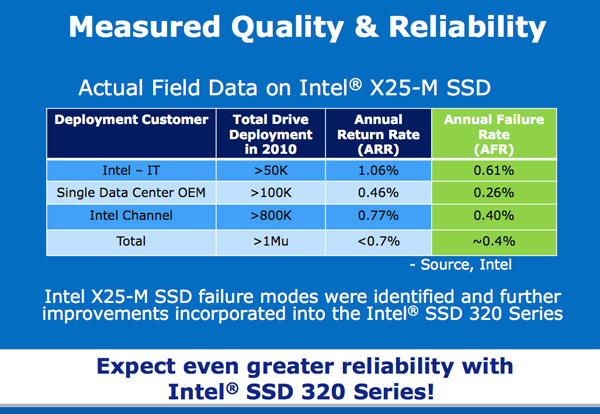
There's just one issue. The SF-1200 was the king of 2010. This year is shaping up to be all about the SF-2200 and the G3 isn't quite as competitive there. Intel realized this as well and thus we got the Intel SSD 510 to address the high performance market. Intel claims the 510 should have the same failure rate as the 34nm X25-M G2 at ~0.6% per year.
The Intel SSD 320 by comparison is aimed at the mainstream market. Remember that's what the M in X25-M always stood for to begin with. As a result we get lower pricing:
| Intel SSD Comparison | ||||||||||||
| X25-M G2 160GB | Intel SSD 320 40GB | Intel SSD 320 80GB | Intel SSD 320 120GB | Intel SSD 320 160GB | Intel SSD 320 300GB | Intel SSD 320 600GB | SSD 510 120GB | SSD 510 250GB | ||||
| User Capacity | 149GB | 37GB | 74GB | 111GB | 149GB | 279GB | 558GB | 111GB | 232GB | |||
| Random Read Performance | Up to 35K IOPS | Up to 30K IOPS | Up to 38K IOPS | Up to 38K IOPS | Up to 39K IOPS | Up to 39.5K IOPS | Up to 39.5K IOPS | Up to 20K IOPS | Up to 20K IOPS | |||
| Random Write Performance | Up to 8.6K IOPS | Up to 3.7K IOPS | Up to 10K IOPS | Up to 14K IOPS | Up to 21K IOPS | Up to 23K IOPS | Up to 23K IOPS | Up to 8K IOPS | Up to 8K IOPS | |||
| Sequential Read Performance | Up to 250MB/s | Up to 200MB/s | Up to 270MB/s | Up to 400MB/s (6Gbps) | Up to 500MB/s (6Gbps) | |||||||
| Sequential Write Performance | Up to 100MB/s | Up to 45MB/s | Up to 90MB/s | Up to 130MB/s | Up to 165MB/s | Up to 205MB/s | Up to 220MB/s | Up to 210MB/s (6Gbps) | Up to 315MB/s (6Gbps) | |||
| Price | $404 | $89 | $159 | $209 | $289 | $529 | $1069 | $284 | $584 | |||
It's still early in the 25nm ramp, but the 25nm Intel SSD 320 is cheaper than the 34nm Intel SSD 510. The only issue is that OCZ is very competitive with its pricing as well and compared to the Vertex 2, Intel's SSD 320 isn't really any cheaper. Intel likes to maintain its 65% profit margins so even though it makes the NAND and the controller in the 320, we're unlikely to see these drives drop below competitive pricing.
Intel expects the 25nm SSD 320 to be even more reliable than the 510 or X25-M.
The Same Controller
The Intel SSD 320, like the 310 and X25-M before it, uses an Intel branded controller. Opening up the 320 reveals a near identical controller to what we saw in the 34nm X25-M G2 housing:
You'll notice the part number is identical to 2009's X25-M G2 controller. In fact, it's the same controller. Apparently the G2 controller had a number of features on-die, but not implemented in firmware. Things like full disk encryption and NAND redundancy never made it out in G2 but are here in the 320 all thanks to new firmware. And no, G2 owners aren't getting it.
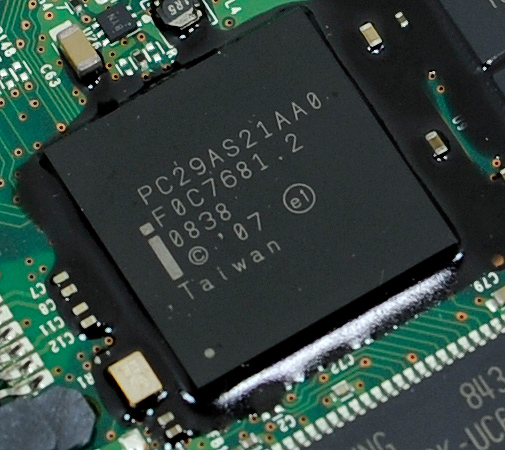
Intel's X25-M G1 Controller
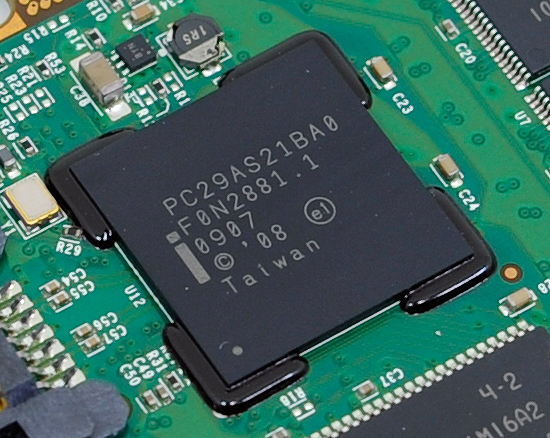
Intel's X25-M G2 Controller
Since the controller hasn't changed, the basic architecture of the SSD hasn't changed either. Intel still doesn't store any user data in its external DRAM cache and there's still a 256KB on-die SRAM.
Next to the Intel controller is a 64MB 166MHz SDRAM device, now made by Hynix. You'll notice that the DRAM chip is a lot smaller than what we've seen in previous X25-M generations, despite growing in capacity. Intel actually turned to mobile SDRAM for use in the SSD 320 to help save on power. While the X25-M G1 and G2 both used a conventional 3.3V SDRAM device, Intel moved to a 1.8V mobile SDRAM chip with the 320.
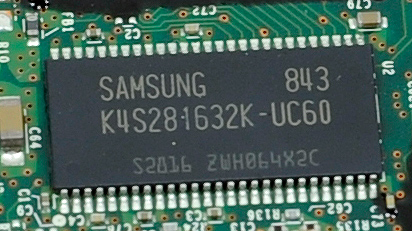
Intel X25-M G1: 16MB 166MHz SDRAM
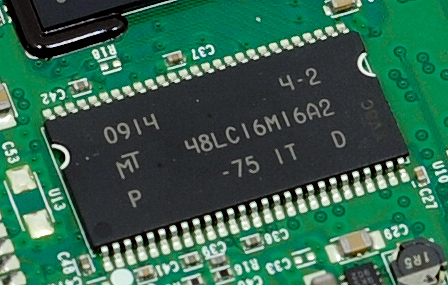
Intel X25-M G2: 32MB 133MHz SDRAM
Intel always prided itself on not storing any user data in its DRAM cache. The external DRAM is only used to cache mapping tables and serve as the controller's scratchpad. In the event of a sudden loss of power, Intel only has to commit whatever data it has in its SRAM to NAND. To minimize the amount of data loss in the event of a sudden power failure, Intel outfitted the SSD 320 with an array of six 470µF capacitors in parallel.
We've seen large capacitors on SSDs before, primarily the enterprise SandForce drives that boast a 0.09F supercap. Intel claims that for its design a single large capacitor isn't necessary given the minimal amount of data that's cached. It further claims that an array of multiple capacitors in parallel allows for much better reliability - if one capacitor fails the array is still useful (vs. a single point of failure in the case of the supercap).



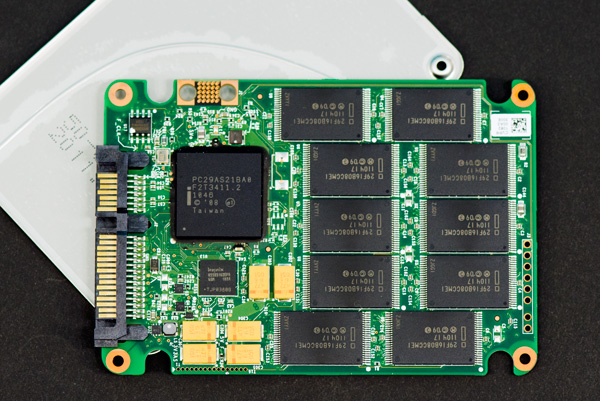
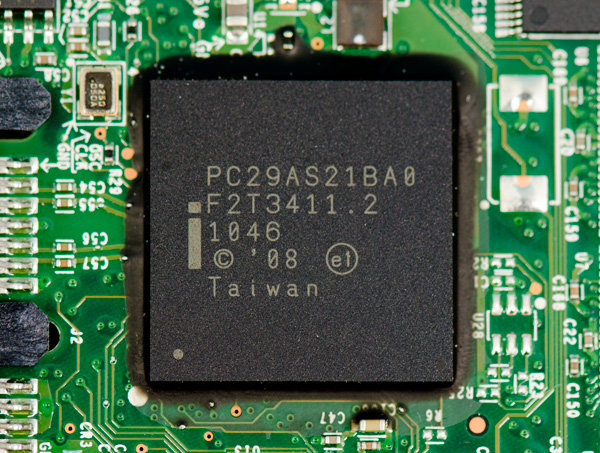
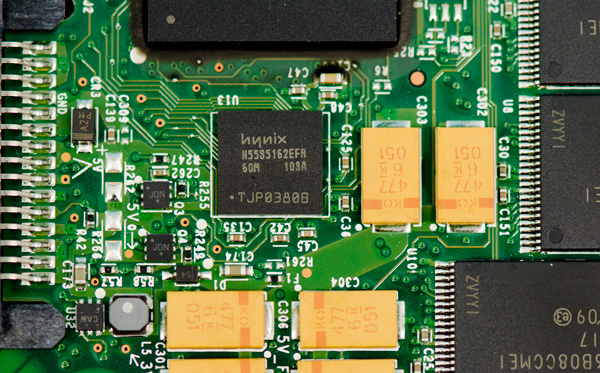









194 Comments
View All Comments
Morten.DK - Monday, April 11, 2011 - link
One thing that bothers me a bit: It seems that the smaller drives has a lower spare area percentage than the 300GB drive.120GB: Physical 120GB, user capacity 111GB, spare ares 9GB which is 7.5%
160GB: Physical 160GB, user capacity 149GB, spare area 11GB which is 6.9%
300GB: Physical 320GB, user capacity 279GB, spare area 41GB which is 12.8%
600GB: Phycical 640GB, user capacity 558GB, spare area 82GB which is 12.8%
Does this mean that the smaller drives does not have the same RAID4-like redundancy as the 300GB drive? Or am I wrong about the physival sizes of the smaller drives?
noblemo - Thursday, April 14, 2011 - link
There are two factors in your calculation: 1) spare area, and 2) GB to GiB conversion. I believe the spare area is as follows:120 GB: 128-120 = 8 GB spare area = 6.25%
300 GB: 320-300 = 20 GB spare area = 6.25%
600 GB: 640-600 = 40 GB spare area = 6.25%
I am not sure about the 160GB model; if it uses six 32GB chips, then the spare area is 16.7%. If it uses five 32GB chips, then there is no spare area.
To convert GB to GiB, divide by 1.024^3:
120 GB = 111.8 GiB
160 GB = 149 GiB
300 GB = 279 GiB
600 GB = 559 GiB
So the 120 GB drive has 128 GB total area and 8 GB spare area (6.25%). This is equivalent to 111.8 GiB with 119.2 GiB total area and 7.45 GiB spare area (6.25%).
noblemo - Friday, April 15, 2011 - link
My previous post was incorrect. The 300GB and 600GB drives have 12.8% spare area, while the smaller drives have 6.8%.mattr00 - Sunday, April 17, 2011 - link
Hey Anand,Thanks as always for a great review. Is there any ETA on benchmarking the 120GB version of this? All of the reviews I see online are 300GB and I'm itching to know whether the 120GB performance is significantly lower than the 300GB performance. I'm considering buying the 120GB, but it has lower IOPS write performance than 300GB according to Intel specs, which I fear will mean low random write performance in the real world.
Thanks!
Surlias - Saturday, April 23, 2011 - link
I've been unable to find a review comparing the 40gb G2 and the 40gb G3 models. Anyone have any experience with both of these models, or perhaps can point me to a review of the 40gb G3 somewhere? I'm sitting on an unopened G2 trying to decide if I want to go to the trouble of exchanging it for a G3. I'd save a few bucks in the process, but if the performance isn't any better then I'd just as soon stick with the G2 and its proven reliability.ross999 - Tuesday, April 26, 2011 - link
I know the documentation says that an ATA password is required to use the device level encryption, and that Mac's OS EFI password isn't quite the same. However, I've spoke with both Intel and Apple, and neither can provide any details about compatibility of these passwords for purposes of encryption. Really, Intel, you don't know if it will work with MacOS? Bizarre.Can anyone shed first-hand knowledge on this?
MB17 - Saturday, May 7, 2011 - link
Cost difference is little to consider for me, so if someone can help:On 3 GBPS systems, I understood that the Intel 320 is a little bit better in real life performance than the 510. Is this correct?
Also, 510 is a little more future proof (if I ever change to a 6GBPS system) and 320 gives me more storage space, right?
These seems to be my main points of consideration, right, or am I overlooking something?
Any definitive reason to buy one over the other?
Thanks so much for any help.
PS: How much free space do I get from the 510 (unlike the 320 I could not find this info)
garuda1 - Monday, May 23, 2011 - link
Does anyone know why Intel's Toolbox won't TRIM an SSD mounted in an external enclosure. It will migrate, but won't TRIM. Intel responded in an email by only saying:“We don’t validate or authorize use of SSD Optimizer through eSATA enclosures. If a customer wants to use an eSATA enclosure, they must understand they are using a configuration that is not validated by Intel and they are on their own.
-If customer wants to use Optimizer on an Intel SSD, suggest they connect it directly to the host system."
But is there a specific reason for this? And will Intel eventually modify the Toolbox to accommodate external SSDs in the near future. Once the host system case is full, the only alternative is external enclosures. Is there some design or F/W limitation that precludes externals?
P.S. - Intel's FAQ section on their website specifically mentions that SSDs are compatible with external eSATA enclosures (unless they recently changed it). This is what led me to believe that my recent purchase of two S320 600GB SSDs would function and optimize in external eSATA enclosure which I also purchased. Thanks for any feedback.
garuda1 - Monday, May 23, 2011 - link
Note question and answer# 4 in the following link at Intel FAQs:http://download.intel.com/support/ssdc/hpssd/sb/in...
hoofy - Monday, August 22, 2011 - link
I am really concerned how the 40GB SSD 320 will perform as i am planning to buy it as an OS drive. My other options are vertex 2 40GB and X-25-V 40GB. Please recommend me guys the best drive among these three.